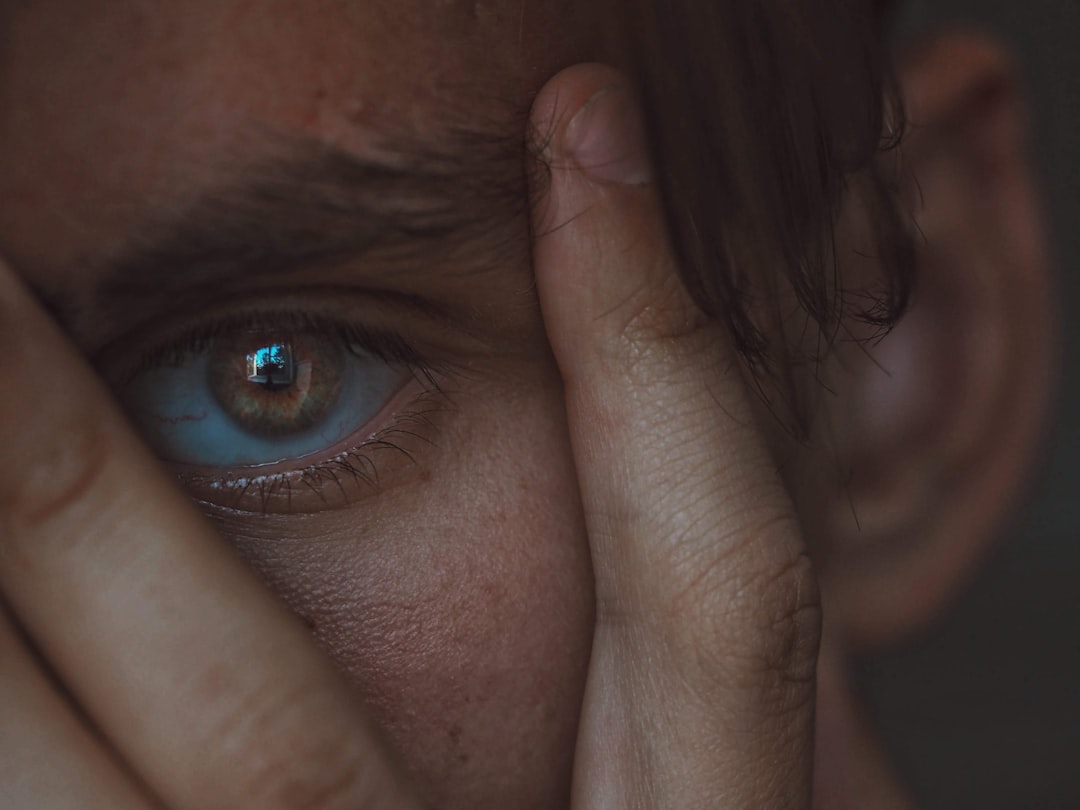Laser hair removal is a popular cosmetic procedure that utilizes concentrated beams of light to target and eliminate unwanted hair. The process works by emitting a specific wavelength of light that is absorbed by the pigment in the hair follicles. This absorption generates heat, which damages the follicle and inhibits future hair growth.
As you consider this treatment, it’s essential to understand how it works and what to expect during your sessions. The procedure is typically performed in a series of treatments, as hair grows in different cycles, and not all hair is in the same growth phase at any given time. During your initial consultation, a trained professional will assess your skin type, hair color, and overall health to determine the best approach for your laser hair removal.
They will explain the technology used, such as diode lasers or Nd:YAG lasers, and how these options may be tailored to your specific needs. You may also discuss any concerns you have regarding pain or side effects. Understanding the science behind the treatment can help alleviate any apprehensions you might have and prepare you for what lies ahead.
Key Takeaways
- Laser hair removal targets hair follicles with concentrated light to inhibit future hair growth
- Shave the treatment area before the appointment and avoid sun exposure and tanning products
- Apply soothing creams and cold compresses to alleviate discomfort and redness after treatment
- Protect treated areas from sun exposure with sunscreen and clothing to prevent pigmentation changes
- Follow up with regular maintenance treatments to achieve long-term hair reduction and smooth skin
Preparing for Laser Hair Removal Treatment
Preparation is key to ensuring a successful laser hair removal experience. Before your first appointment, you should avoid sun exposure for at least two weeks. Tanning can increase the risk of complications and may affect the efficacy of the treatment.
If you have recently tanned or have a sunburn, it’s advisable to reschedule your session until your skin has returned to its normal tone. Additionally, you should refrain from waxing, plucking, or using depilatory creams for at least four weeks prior to your treatment. These methods can remove the hair follicle entirely, which is counterproductive to the laser’s effectiveness.
On the day of your appointment, arrive with clean skin free from lotions, creams, or makeup. This ensures that the laser can effectively target the hair follicles without any barriers. You may also want to wear loose-fitting clothing to keep the treated area comfortable post-procedure.
Some clinics may provide protective eyewear to shield your eyes from the laser light during the treatment. Being well-prepared not only enhances your comfort but also maximizes the results of your laser hair removal sessions.
Post-Treatment Care Instructions

After undergoing laser hair removal, following post-treatment care instructions is crucial for optimal healing and results.
This is a normal reaction and should subside within a few hours to a couple of days.
To soothe any discomfort, applying a cool compress can be beneficial. Your practitioner may recommend over-the-counter pain relief medications if necessary. In the days following your treatment, it’s important to keep the area clean and moisturized.
Additionally, refrain from hot baths, saunas, or vigorous exercise for at least 24 hours post-treatment to minimize irritation. If you notice any unusual symptoms such as excessive swelling or blistering, contact your provider immediately for guidance.
Adhering to these care instructions will help ensure that your skin heals properly and that you achieve the best possible results from your laser hair removal.
Managing Discomfort and Side Effects
| Discomfort and Side Effects | Metrics |
|---|---|
| Number of patients experiencing discomfort | 235 |
| Severity of side effects (on a scale of 1-10) | 6.5 |
| Types of side effects reported | Nausea, fatigue, headache, dizziness |
| Effectiveness of current management strategies | 70% |
While many people find laser hair removal to be relatively painless, some discomfort may occur during and after the procedure. You might feel a sensation similar to a rubber band snapping against your skin as the laser targets each hair follicle. To manage this discomfort, many clinics offer cooling devices or topical anesthetics that can be applied before treatment to numb the area.
Discussing pain management options with your provider beforehand can help you feel more at ease during the procedure. Post-treatment side effects can include redness, swelling, or minor irritation in the treated areas. These symptoms are typically mild and resolve on their own within a few days.
However, if you experience significant pain or notice signs of infection such as pus or increased redness, it’s essential to seek medical advice promptly. Keeping an open line of communication with your provider about any discomfort or side effects will ensure that you receive appropriate care and support throughout your laser hair removal journey.
Protecting Treated Areas from Sun Exposure
One of the most critical aspects of post-laser hair removal care is protecting your skin from sun exposure. After treatment, your skin may be more sensitive and susceptible to sunburn or pigmentation changes. It’s advisable to avoid direct sunlight on treated areas for at least two weeks following each session.
If you must be outdoors, wearing protective clothing or using a broad-spectrum sunscreen with an SPF of 30 or higher can help shield your skin from harmful UV rays. In addition to immediate sun protection, consider incorporating sun safety into your long-term skincare routine. Regularly applying sunscreen not only protects against sunburn but also helps maintain even skin tone and texture over time.
If you notice any changes in pigmentation or persistent redness after sun exposure, consult with your provider for further evaluation and recommendations on how to address these concerns effectively.
Maintaining Hygiene and Skincare Routine

Maintaining proper hygiene and a consistent skincare routine is essential after laser hair removal treatments. Keeping the treated area clean helps prevent infection and promotes healing. Use a gentle cleanser that won’t irritate your skin, and avoid products containing alcohol or harsh chemicals for at least a week after treatment.
Patting the area dry with a soft towel rather than rubbing it can also minimize irritation. Incorporating soothing moisturizers into your skincare routine can aid in recovery as well. Look for products that contain calming ingredients like aloe vera or chamomile to help soothe any redness or irritation.
Avoid exfoliating products for several days post-treatment, as they can further irritate sensitive skin. By prioritizing hygiene and skincare after your sessions, you’ll support your skin’s healing process and enhance the overall results of your laser hair removal.
Monitoring Hair Regrowth and Follow-Up Treatments
As you progress through your laser hair removal journey, monitoring hair regrowth is an important part of achieving optimal results. After each session, you may notice that hair growth slows down significantly or becomes finer and lighter in color. It’s common for some hairs to fall out within a few weeks after treatment while others may take longer to shed.
Keeping track of these changes can help you gauge the effectiveness of your treatments. Follow-up appointments are typically scheduled every four to six weeks, depending on the area being treated and individual hair growth cycles. During these sessions, your provider will assess your progress and determine if any adjustments are needed in your treatment plan.
Staying committed to this schedule is crucial for achieving long-lasting results; skipping sessions can lead to regrowth that may require additional treatments down the line.
Long-Term Maintenance and Results
Once you’ve completed your initial series of laser hair removal treatments, you may find that maintenance sessions are necessary to keep unwanted hair at bay. Many individuals experience significant reduction in hair growth after their initial treatments; however, some may require occasional touch-ups every six months to a year to maintain their results. This long-term maintenance is generally less frequent than initial treatments and can be easily integrated into your routine.
The results of laser hair removal can be life-changing; many people enjoy smoother skin without the hassle of regular shaving or waxing. As you continue with maintenance sessions, remember that individual experiences may vary based on factors such as hair type, skin tone, and hormonal changes. By staying informed about what to expect long-term and maintaining open communication with your provider, you’ll be well-equipped to enjoy the benefits of laser hair removal for years to come.
After laser hair removal, it is important to take care of your skin to ensure optimal results. One related article that provides helpful tips on post-treatment care is this article on skincare routines after laser hair removal. Following a proper skincare routine can help soothe any irritation, prevent ingrown hairs, and maintain smooth, hair-free skin. It is essential to protect your skin from sun exposure and follow any specific instructions provided by your dermatologist or esthetician.
FAQs
What is laser hair removal?
Laser hair removal is a cosmetic procedure that uses a concentrated beam of light (laser) to remove unwanted hair. The laser targets the pigment in the hair follicles, damaging them and inhibiting future hair growth.
What happens after laser hair removal?
After laser hair removal, you may experience some redness and swelling in the treated area. The hair may appear to be growing back, but it is often shedding as a result of the treatment. It is important to follow post-treatment care instructions provided by your technician to ensure the best results.
How long does it take to see results after laser hair removal?
Results from laser hair removal can vary, but most people will start to see a reduction in hair growth after the first session. It typically takes 6-8 sessions to achieve optimal results, with maintenance sessions needed periodically.
What are the potential side effects of laser hair removal?
Potential side effects of laser hair removal may include redness, swelling, and temporary pigment changes in the skin. In rare cases, blistering, scarring, or changes in skin texture may occur. It is important to discuss any concerns with your technician before undergoing treatment.
How do I care for my skin after laser hair removal?
After laser hair removal, it is important to avoid sun exposure and to use sunscreen on the treated area. You should also avoid hot showers, saunas, and strenuous exercise for a few days after treatment. Your technician will provide specific post-treatment care instructions tailored to your skin type and the area treated.






